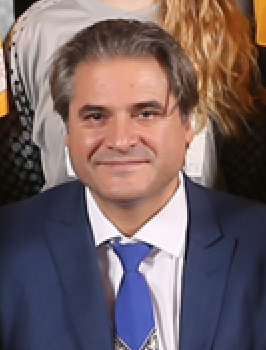Scientific Program

Vasilis Paspaliaris
Tithon Biotech Inc, Australia
Title: Discovery of a naturally occurring pluripotent stem cell population in human peripheral blood
Biography:
Vasilis Paspaliaris completed his PhD at the Department of Pharmacology, University of Melbourne Australia in 1993 and his postdoctoral followed after at Central Research Division, Pfizer Inc in Connecticut USA. He has also done postgraduate studies at Harvard University, MIT and Oxford University. He has been founder and director of several companies delving in the field of drug discovery, artificial intelligence and regenerative medicine and has published papers and holds several patents in these two fields. He is the President of Tithon Biotech Inc., a regenerative medicine biotechnology company
Abstract
The urge to discover a natural pluripotent stem cells lead to a breakthrough in the field of regenerative medicine with the discovery of induced pluripotent stem cells (iPSCs). iPSCs are a type of pluripotent stem cell generated in vitro from adult cells by introducing four transcription factors (OCT4, SOX2, MYC, KLF4) termed Yamanaka Factors. The hype with iPSCs is that they would offer an unlimited supply of autologous cells that could be used clinically, themselves and their differentiated end-products, without the risk of immune rejection. However, problems arose with autologous transplantation of iPSCs and their differentiated end-products, including high cost and excessive manufacturing time, making them, in most cases, clinically impractical to use. Therefore, currently the solution is to use donor iPSC cell lines to produce allogeneic “off-the-shelf” tissue matching cell products. Although this has reduced the manufacturing time, it is still a relatively expensive exercise that clinically demands immunosuppression. Hypothetically, a naturally occurring PSC found in abundance would have low cost, less manufacturing time, and used autologously, would eliminate immunosuppression protocols. However, the surge in iPSC research has hampered the search for a naturally occurring pluripotent stem cell. We have discovered, using immunohistochemical analysis, a population of cells in human peripheral blood that are pluripotent, easy to isolate, and abundant. This discovered population of cells range between 1 to 5 million cells per ml of plasma, are relatively small in diameter (<5um), express all four Yamanaka factors (OCT4, SOX2, MYC, KLF4), stain positive for the Kyoto Probe (KP-1), and express Nanog, CD133, CXCR4, SSEA3 and SSEA4. These easily obtainable, naturally occurring PSCs from peripheral blood may have far reaching positive consequences in the field of regenerative medicine and bio-banking.
- Stem Cell
- Cell Therapy
- Tissue Engineering
- Molecular Genetics
- Stem Cell and Regenerative Medicine

